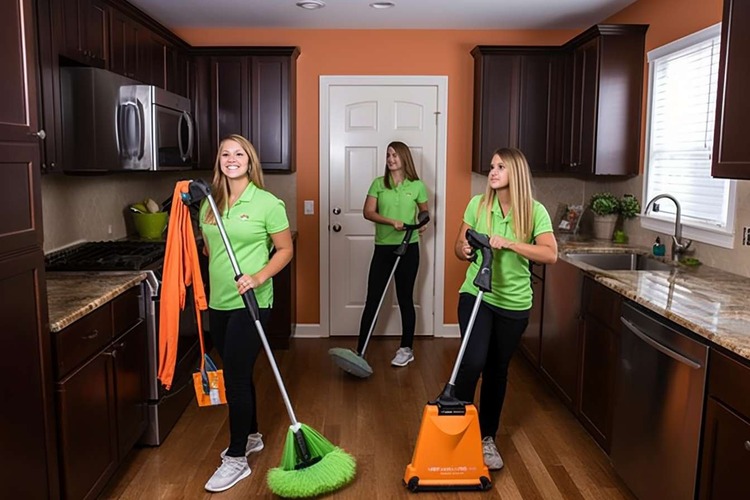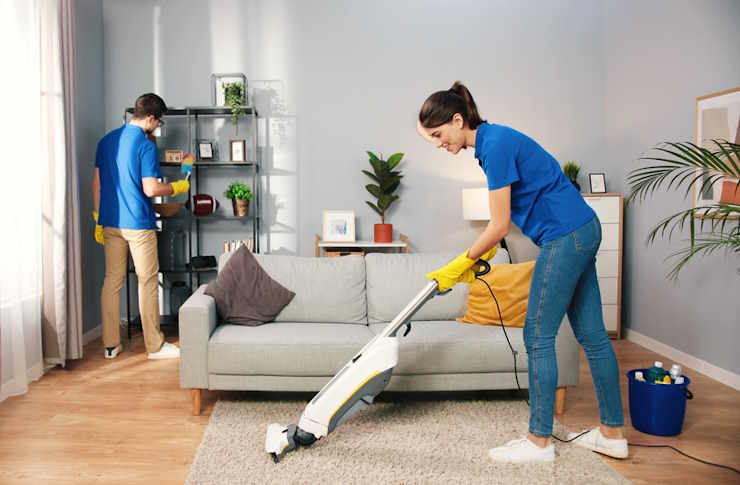Cleaning Services: What to Expect and How to Choose
A clean space isn’t just about appearance—it’s about comfort, productivity, and well-being. Whether you’re a homeowner, renter, or manage multiple properties, understanding how cleaning services work helps you get consistent results without stress. This guide explains what’s typically included, how to evaluate providers in your area, the role of modern scheduling tools (including the oddly named bulk_create_keyword), and the essentials of eco-friendly and safe cleaning practices.

What’s included in cleaning services?
Most providers offer several tiers. Standard or recurring cleaning focuses on high-traffic areas and frequent tasks: dusting, vacuuming and mopping floors, wiping counters, cleaning sinks, mirrors, exterior appliance surfaces, and basic bathroom sanitization. Deep cleaning goes further—think baseboards, door frames, light switches, tile grout detail, inside the oven or fridge (often add-ons), and intensive bathroom descaling. Move-in/move-out services typically include inside cabinets and appliances, more detailed wall spot-cleaning, and fixtures. Post-construction cleaning targets fine dust removal, sticker residue, and detailed polishing. Commercial cleaning adds nightly office resets, restocking consumables, and sometimes floor care like buffing or burnishing. Always request a written scope so expectations and exclusions are clear.
How to choose reliable local services
Start by shortlisting local services with strong, recent reviews and consistent feedback on punctuality and quality. Ask about employee vetting (background checks), training standards, and whether teams are employees or contractors. Insurance and bonding matter—verify proof of liability coverage to protect your property. Clarify supplies: Will they bring products and equipment? If you prefer fragrance-free or “green” solutions, ensure they can accommodate that. Request a room-by-room checklist and see how they handle special items such as marble, hardwood, or delicate fixtures. Reliable providers typically offer transparent communication, predictable scheduling windows, and a satisfaction or re-clean policy when something is missed.
What does bulk_create_keyword mean here?
You might encounter technical terms when booking services online. In some scheduling or operations tools, “bulk_create_keyword” can refer to a batch action for creating multiple jobs, checklists, or assignments at once—especially useful for property managers coordinating cleanings across several units or locations. While the label itself may vary by software, the underlying idea is bulk scheduling and standardized task lists. If you manage multiple appointments in your area, ask providers whether their systems support batch booking, templated checklists, before/after photos, and status updates. Features like these improve consistency, speed up dispatching, and help prevent miscommunication across teams.
Eco-friendly and safety considerations
Cleaning chemistry matters. If you want eco-conscious service, look for plant-based, third-party certified products where possible and clear labeling for any disinfectants used. Proper dwell time, dilution, and ventilation are crucial for effective sanitation and safer air quality. For allergy-sensitive households, fragrance-free options and HEPA-filter vacuums help reduce particulates, dust mites, and pet dander. In professional settings, color-coded cloths can reduce cross-contamination between kitchens and bathrooms, and microfiber improves particulate capture. Responsible providers train staff on product handling, storage, and safety data sheets, as well as the correct use of PPE when needed—especially during deep cleans or post-renovation work.
This article is for informational purposes only and should not be considered medical advice. Please consult a qualified healthcare professional for personalized guidance and treatment.
Scheduling, checklists, and quality control
Great results rely on repeatable systems. Ask how providers build and follow checklists: Are tasks prioritized by room? How do they handle extras like inside appliances or high shelves? For recurring cleanings, an alternating “rotation” plan can keep deep details on schedule without extending every visit. Digital tools—timestamps, geotagged photos, and completion logs—can increase accountability and provide a record of what was done. Clarify access instructions, pet protocols, and alarms/key handling in advance. For quality control, reputable teams welcome feedback and conduct periodic inspections to maintain standards. A clear communication channel—email, app, or phone—reduces friction and helps small issues get corrected quickly.
Preparing your space for success
A few minutes of prep can amplify results. Tidying surfaces and floors lets cleaners focus on actual cleaning rather than sorting items. Note fragile pieces, special materials, and any areas to avoid. If you have preferences—such as “no bleach,” “wood-safe only,” or “use our vacuum”—share them beforehand. For large jobs like move-outs or post-construction, confirm water and power availability, elevator access, and parking. If you’re coordinating multiple properties, consider consolidating instructions into a simple guide and, where available, use features like bulk_create_keyword or batch scheduling to roll out consistent directions across all units.
What to expect after the first visit
The first appointment is often the longest as teams learn your space and baseline needs. Subsequent visits usually move faster and become more consistent. Expect a brief walkthrough or summary after the first clean—what went well, what needs different products or tools, and any recommended add-ons to meet your standards. Over time, trust builds around routines, and you can refine cadence: weekly, biweekly, monthly, or seasonal deep cleans. If your expectations change—hosting guests, listing a property, or tackling construction dust—update the scope promptly so time and staffing align with your goals.
Conclusion
Cleaning services work best when scope, products, scheduling, and communication are aligned. By clarifying what’s included, vetting local services carefully, using structured checklists, and leveraging modern tools for coordination—even quirky ones labeled bulk_create_keyword—you set the stage for consistent, high-quality results. A little planning and transparent expectations go a long way toward a cleaner, healthier, and more organized environment.






